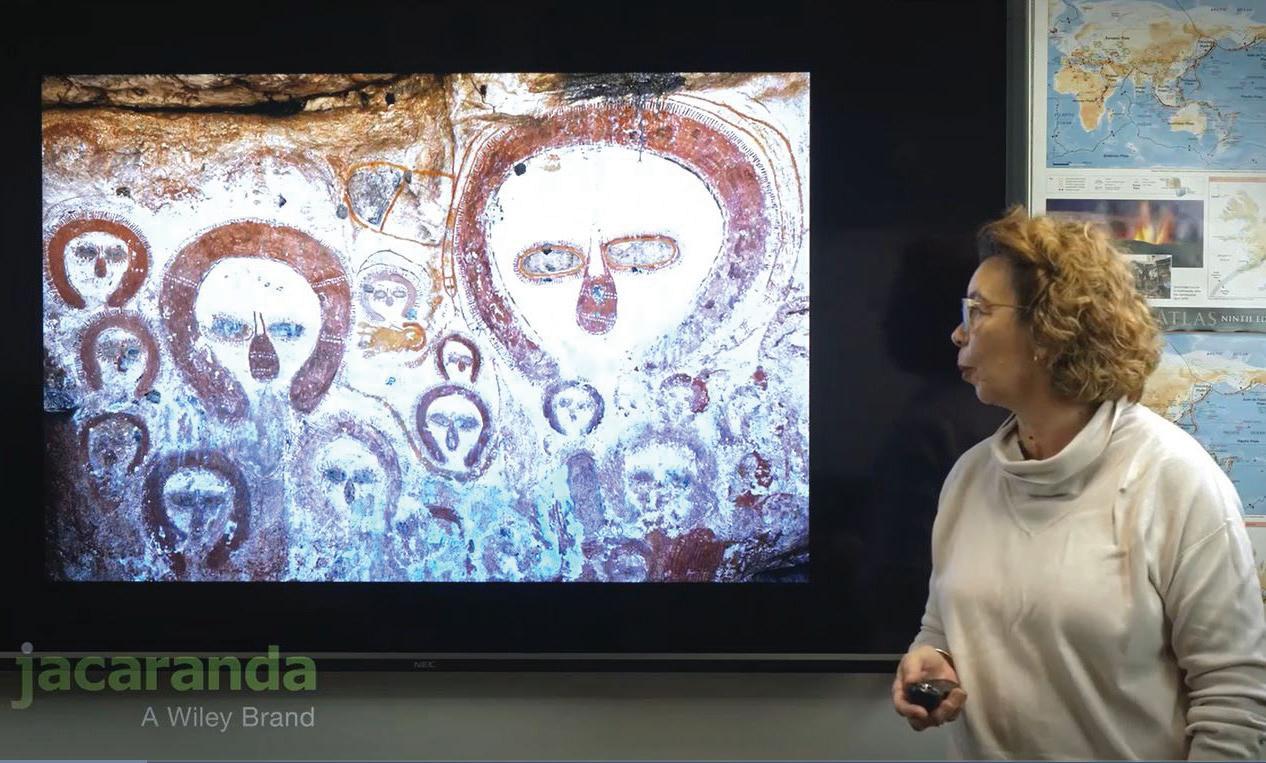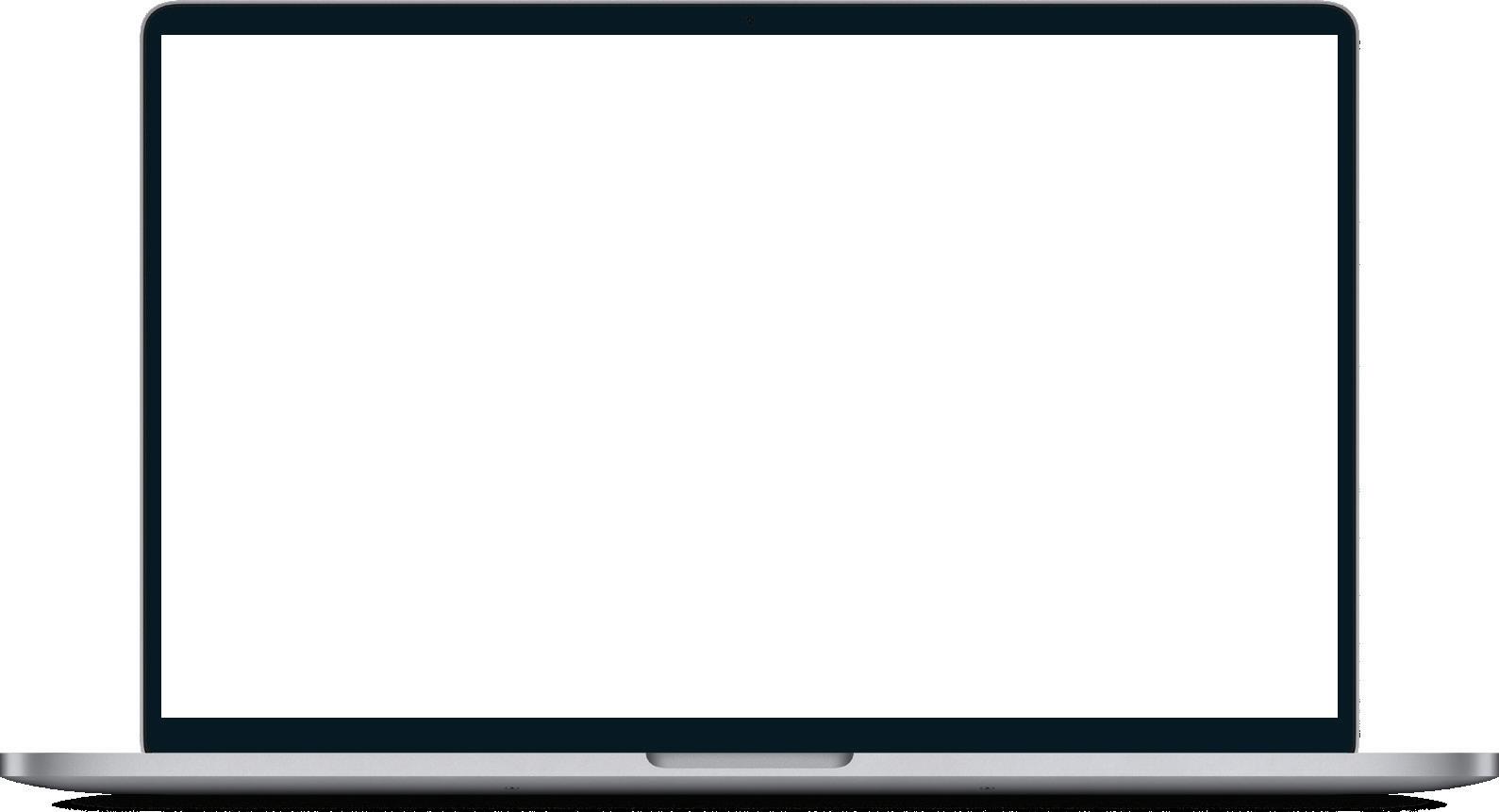

HUMANITIES ALIVE 8
AUSTRALIAN CURRICULUM | THIRD EDITION
UNCORRECTEDPAGEPROOFS
UNCORRECTEDPAGEPROOFS
JACARANDA
HUMANITIES ALIVE 8
AUSTRALIAN CURRICULUM | THIRD EDITION
ROBERT DARLINGTON
JUDY MRAZ
GRAEME SMITHIES
MATTHEW RICHARDSON
MEREDITH BEATON
BENJAMIN ROOD
CATHY BEDSON
ANNE LOW
SIMON PHELAN
CONTRIBUTING AUTHORS
Karen Bowden | Alex Scott | Rachel Wallis | Benjamin White
REVIEWED BY Courtney Rubie, Wiradjuri woman
Rachel Wallis, Wiradjuri woman
UNCORRECTEDPAGEPROOFS
Third edition published 2023 by John Wiley & Sons Australia, Ltd
Level 4, 600 Bourke Street, Melbourne, Vic 3000
First edition published 2013
Second edition published 2018
Typeset in 10.5/13 pt TimesLT Std
© John Wiley & Sons Australia, Ltd 2013, 2018
The moral rights of the authors have been asserted.
ISBN: 978-1-394-15086-1
Reproduction and communication for educational purposes
The Australian Copyright Act 1968 (the Act) allows a maximum of one chapter or 10% of the pages of this work, whichever is the greater, to be reproduced and/or communicated by any educational institution for its educational purposes provided that the educational institution (or the body that administers it) has given a remuneration notice to Copyright Agency Limited (CAL).
Reproduction and communication for other purposes
Except as permitted under the Act (for example, a fair dealing for the purposes of study, research, criticism or review), no part of this book may be reproduced, stored in a retrieval system, communicated or transmitted in any form or by any means without prior written permission. All inquiries should be made to the publisher.

Trademarks
Jacaranda, the JacPLUS logo, the learnON, assessON and studyON logos, Wiley and the Wiley logo, and any related trade dress are trademarks or registered trademarks of John Wiley & Sons Inc. and/or its affiliates in the United States, Australia and in other countries, and may not be used without written permission. All other trademarks are the property of their respective owners.
Front cover images: Getty Images / Boris SV | © Shutterstock whatstock/ Shutterstock | electra / Shutterstock | Oktora / Shutterstock| Chanut-is-Industries from
“http://www.flaticon.com” www.flaticon.com| mynamepong from “http://www.flaticon.com” www.flaticon.com| Freepik from
“http://www.flaticon.com” www.flaticon.com |max.icons from
“http://www.flaticon.com” www.flaticon.com| Ferrace Enterprises from “http://www.flaticon.com” www.flaticon.com| Wichai.wi from “http://www.flaticon.com” www.flaticon.com | Icongeek26 from “http://www.flaticon.com” www.flaticon.com| Flat Icons from “http://www.flaticon.com” www.flaticon.com |Rudiyana from “http://www.flaticon.com” www.flaticon.com | Icongeek26 from “http://www.flaticon.com” www.flaticon.com
Illustrated by various artists, diacriTech and Wiley Composition Services
Typeset in India by diacriTech
All activities have been written with the safety of both teacher and student in mind. Some, however, involve physical activity or the use of equipment or tools. All due care should be taken when performing such activities. Neither the publisher nor the authors can accept responsibility for any injury that may be sustained when completing activities described in this textbook.
UNCORRECTEDPAGEPROOFS
This suite of print and digital resources may contain images of, or references to, members of Aboriginal and Torres Strait Islander communities who are, or may be, deceased. These images and references have been included to help Australian students from all cultural backgrounds develop a better understanding of Aboriginal and Torres Strait Islander peoples’ history, culture and lived experience. Wherever possible, culturally sensitive material has been flagged with a disclaimer at the beginning of a lesson to help teachers and students navigate the material.
2.11 What was the power of the written word? ����� 000
2.12 Inquiry: Was King Arthur real? ������������������������ 000
2.13 Inquiry: The Magna Carta ������������������������������� 000
2.14 What were the changing relations between Islam, Christianity and Judaism in the Middle Ages? 000
1
1.1
1.2
1.4 SkillBuilder: Sequencing events in chronological order
1.5 SkillBuilder: Explaining different historical interpretations ���������������������������������
1.6 SkillBuilder: Interpreting sources on the Vikings
1.7 SkillBuilder: Interpreting medieval art as sources ����������������������������������
1.8 SkillBuilder: Evaluating Ottoman Empire sources ��������������������������������
1.9 SkillBuilder: Making your own notes to analyse relevant sources
1.10 SkillBuilder: Analysing different perspectives�������������������������������������
1.11 SkillBuilder: Analysing cause and effect
1.12 SkillBuilder: Making your own notes from sources ������������������������������������
1.13 SkillBuilder: Evaluating historical significance ��������������������������������������
1.14 SkillBuilder: Evaluating roles and achievements
1.15 Review
2 Medieval Europe
2.1
2.2 How do we know about medieval Europe?
2.3 What are the key features of the feudal system? 000
2.4 How was life for people in the feudal system? ����������������������������������������������� 000
2.5 What impact did medieval people have on their environment? ������������������������������������000
2.6 What were the defence features of the medieval castle? 000
2.7 How was warfare conducted in the Middle Ages? 000
2.8 Why did towns begin to grow in this period? ����������������������������������������������������000
2.9 How were people punished for committing crimes in medieval times? ������������������������������ 000
2.10 What was the power and authority of the Church in medieval times? 000
2.15 What was the Black Death? 000
2.16 How did the disease spread 000
2.17 How did people respond to the Black Death ���������������������������������������������������� 000
2.18 How did the Black Death change society? 000
2.19 Inquiry: Tackling a problem from different angles 000
2.20 Review 000
3 Renaissance Italy (c� 1400–1600)
3.1 Overview
3.2 How do we know about Renaissance Italy?
3.3 What were the origins of the Renaissance?
3.4 Why is Florence called the cradle of the Renaissance?
3.5 How did Venice contribute to the Renaissance?
3.6 What was it like to live during the Renaissance?
3.7 How did art, architecture and sculpture change during the Renaissance?
3.8 Who contributed to the scientific revolution?
3.9 How did the Renaissance spread?
3.10 What were the Reformation and Counter-Reformation?
3.11 What were the legacies of the Renaissance?
3.12 Inquiry: Significant women of the Renaissance
3.13 Review
4 The emergence of the modern world (c 1500–1650) 000
4.1 Overview 000
4.2 How do we know about the emergence of the modern world? 000
4.3 What caused economic and social change in Early Modern times? 000
UNCORRECTEDPAGEPROOFS
4.4 How did the Protestant Reformation bring change? 000
4.5 How did the power of rulers change in Early Modern Europe? �������������������������������� 000
4.6 What were the achievements of the Scientific Revolution? 000
4.7 INQUIRY: Historians’ different interpretations of issues in pre-Modern Europe 000
4.8 Review 000
5 Mongol expansion (c� 1206–1368)
5.1 Overview
5.2 How do we know about the Mongol expansion?
5.3 What was China like before Mongol conquest?
7.12 What are some factors that led to the decline and end of the Viking Age? ���������������������������������������������������� 000
7.13 Inquiry: How trustworthy are the sagas? 000
7.14 Review 000
8 The Spanish conquest of the Americas (c 1492–1572) 000
5.4 Who were the Mongols?
5.5 How did Temujin come to power?
5.6 How did the Mongols conquer the world?
5.7 What was China like under Mongol rule?
5.8 What was the Yuan court like?
5.9 Was there peace under Mongol rule?
5.10 How did the empire end?
5.11 Inquiry: Conquering and controlling
5.12 Review
6 The Ottoman Empire
6.1 Overview
6.2 What are the origins of the Ottoman Empire?
6.3 What was the Golden Age of Islam?
6.4 How did the Ottoman Empire expand?
6.5 What caused the fall of Constantinople?
6.6 Who was Suleiman the Magnificent?
6.7 What was life like in the Ottoman Empire?
6.8 What was the Ottoman contribution to art, architecture and literature?
6.9 Inquiry: Collaborative research
6.10 Review
7 The Vikings (c�
790–1066)
000
7.1 Overview��������������������������������������������������������� 000
7.2 What do sources tell us about the Vikings? 000
7.3 How did the geography and climate of Scandinavia influence the Viking way of life? 000
7.4 Who were the Vikings and how did they live? 000
7.5 What was the early Viking religion and how did it change? ����������������������������������������� 000
7.6 What was the impact of the developments in longboat technology? 000
7.7 How did Viking craftwork protect the warriors in battle? ������������������������������������������� 000
7.8 Who did the Vikings attack and raid? 000
7.9 Where did the Vikings begin to settle beyond their homelands? 000
7.10 Where did the Vikings develop trade routes? �������������������������������������������������� 000
7.11 What are some of the extraordinary achievements of the Vikings? 000
8.1 Overview 000
8.2 How do we know about the Spanish conquest of the Americas? 000
8.3 Who were the Aztecs? 000
8.4 How did the arrival of the conquistadors change the Americas?������������������������������������ 000
8.5 What were the effects of conquest and colonisation? 000
8.6 What were the long-term legacies of conquest and colonisation? 000
8.7 Inquiry: Spanish conquest exhibition 000
8.8 Review 000
9
Angkor and the Khmer Empire (c�
802–1431)
9.1 Overview
9.2 How do we know about Angkor and the Khmer Empire?
9.3 How much did geography influence Khmer civilisation?
9.4 What was the historical setting?
9.5 How did the Khmer create an empire?
9.6 How did religions influence the Khmer Empire?
9.7 What was life like in the Khmer Empire?
9.8 Why are Angkor’s buildings famous?
9.9 Why did Angkor and the Khmer Empire decline?
9.10 What are the legacies of the Khmer Empire?
9.11 INQUIRY: Contested histories
9.12 Review
10 Japan under the shōguns (c� 794–1867) 000
10.1 Overview��������������������������������������������������������� 000
10.2 How do we know about Japan under the shōguns? 000
10.3 What was life like in early Japan? 000
10.4 How did the shōguns take control? 000
10.5 How did Japanese society organise itself? 000
UNCORRECTEDPAGEPROOFS
10.6 Who were the samurai? 000
10.7 How did people express themselves? 000
10.8 How did they use the land? 000
10.9 How did Japan re-join the world? 000
10.10 INQUIRY: Shintō and Buddhism guide 000
10.11 Review 000
11 Polynesian expansion across the Pacific (c� 700–1756)
11.1
11.2 How do we know about the Polynesian expansion across the Pacific?
11.3 What is the Polynesian Triangle?
11.4 What happened on Rapa Nui? 000
12.21 SkillBuilder: Constructing a basic sketch map
12.22 Review 000
13 Landforms and landscapes 000
13.1 Overview 000
13.2 Why do landscapes vary? 000
13.3 What processes shape landscapes? 000
11.5 What was life like in Hawai’i? 000
11.6 Who were the people of Aotearoa? 000
11.7 Were customs and culture the same everywhere?
11.8 What happened when Polynesians settled and stayed?
12 Geographical skills and concepts
12.1
12.2
12.3 Skills used in Geography��������������������������������
12.4 SkillBuilder: Recognising land features ��������������������������������������������
12.5 SkillBuilder: Reading contour lines on a map
12.6 SkillBuilder: Using latitude and longitude ������������������������������������������
12.7 SkillBuilder: Calculating distance using scale ���������������������������������������
12.8 SkillBuilder: Drawing simple cross-sections ���������������������������������
12.9 SkillBuilder: Interpreting an aerial photo �������������������������������������
12.10 SkillBuilder: Understanding thematic maps
12.11 SkillBuilder: Comparing population pyramids ������������������������������������������
12.12 SkillBuilder: Creating and reading compound bar graphs ��������������������
12.13 SkillBuilder: Reading and describing basic choropleth maps ������������������
12.14 SkillBuilder: Drawing a line graph using Excel ��������������������������������������
12.15 SkillBuilder: Using positional language
12.16 SkillBuilder: Constructing a field sketch ����������������������������������������������
12.17 SkillBuilder: Creating and describing complex overlay maps ��������������������
12.18 SkillBuilder: Drawing a précis map ������������������������������������
12.19 SkillBuilder: Creating and reading pictographs ��������������������������������������
12.20 SkillBuilder: Describing photographs
13.4 What landscapes form underground? 000
13.5 What are the landforms and landform regions of Australia? 000
13.6 What are deserts like in Australia and China? 000
13.7 How do the savanna grasslands of Australia and Africa compare? 000
13.8 What makes a rainforest? 000
13.9 INQUIRY: The value of rainforests 000
13.10 Investigating topographic maps — Features of the Daintree rainforest ����������������� 000
13.11 What cultural significance do landscapes have for First Nations Peoples of Australia? 000
13.12 Why do we preserve and manage landscapes? 000
13.13 Review 000
14 Landscapes
formed by water
000
14.1 Overview 000
14.2 What landscapes are formed by water? 000
14.3 What is coastal erosion? 000
14.4 What is the role of deposition in coastal environments? 000
14.5 How are coasts managed? 000
14.6 How do First Nations Australians use coastal environments? 000
14.7 How do coastal landforms compare? 000
14.8 How does water influence river landscapes? 000
14.9 How do people manage river landscapes? 000
14.10 INQUIRY: Coastal environment case study ������������������������������������������������������ 000
14.11 Investigating topographic maps — Water flows in the Haast River 000
15 Geomorphic hazards 000
15.1 Overview 000
15.2 What are plate tectonics? 000
UNCORRECTEDPAGEPROOFS
15.3 How do mountains form? 000
15.4 Where are the world’s mountain ranges? 000
15.5 How do people connect with mountains? 000
15.6 What are earthquakes? ���������������������������������� 000
15.7 What is a tsunami? ����������������������������������������� 000
15.8 What are the impacts of earthquakes and tsunamis? 000
15.9 What are volcanoes and how are they formed? 000
15.10 Investigating topographic maps — Mount Taranaki, New Zealand ����������������������������������� 000
15.11 What are the types of volcanoes and how do they erupt? 000
15.12 How do volcanic eruptions affect people? 000
15.13 INQUIRY: Supervolcano report 000 15.14
18.6 SkillBuilder: Developing argument paragraphs
18.7 SkillBuilder: Delivering an oral presentation �������������������������������������
18.8 SkillBuilder: Writing and conducting a survey ��������������������������������������������
18.9 SkillBuilder: Writing a submission �
18.10 Review 000
and migration
19 Australia’s government and democracy 000
16.1
16.3 Why do people migrate between countries?
16.4 Why do people migrate within countries? �������������������������������������������������������
16.5 Why do people migrate from the country to the city? 000
16.6 How have urbanisation patterns changed over time? 000
16.7 What are the advantages and disadvantages of urbanisation? 000
16.8 How do we create sustainable cities? 000
changing urban world
17.5
17.6 Is Australia an urbanised country? 000
17.7 How does urbanisation impact the economy? 000
17.8 INQUIRY: Planning Australia’s newest city 000
—
19.1 Overview 000
19.2 How do Australians participate in our democracy? 000
19.3 How do we form a government? 000
19.4 How is opinion shaped? 000
19.5 Inquiry: What is the role of digital media in Australian politics? ����������������������������������������� 000
19.6 Review ������������������������������������������������������������ 000
20 Where do our laws come from? 000
20.1 Overview 000
20.2 Why do we need laws? 000
20.3 How do parliaments make laws? 000
20.4 How do courts make laws? 000
20.5 What is the relationship between parliament and courts in law-making? 000
20.6 What is the difference between civil and criminal law? 000
20.7 What is the role of the law in protecting our rights?������������������������������������������������������������� 000
20.8 What is customary law in First Nations of Australia communities? 000
20.9 INQUIRY: Does Australia need a bill of rights? 000
20.10 Review 000
21 Citizenship, diversity and
identity
21.1 Overview 000
21.2 What does national identity mean in a globalised world? ���������������������������������������� 000
21.3 How has Australia’s identity been shaped? ��� 000
21.4 What are the different perspectives on national identity in Australia? 000
21.5 INQUIRY: Change the Date — The future of Australia Day 000 21.6 Review 000
UNCORRECTEDPAGEPROOFS
18.5 SkillBuilder: Using the deconstruct–reconstruct method ��
UNCORRECTEDPAGEPROOFS
About this resource NEW FOR
AUSTRALIAN CURRICULUM V9.0JACARANDA
HUMANITIES ALIVE 8




AUSTRALIAN CURRICULUM THIRD EDITION
Developed by teachers for students
Tried, tested and trusted. Every lesson in the new Jacaranda Humanities Alive series has been carefully designed to support teachers and help students evoke curiosity through inquiry-based learning while developing key skills.
Because both what and how students learn matter
Learning is personal Learning is effortful Learning is rewarding
Whether students need a challenge or a helping hand, you’ll find what you need to create engaging lessons.
UNCORRECTEDPAGEPROOFS

Whether in class or at home, students can access carefully scaffolded lessons with in-depth skills development while engaging multi-modal content designed to spark curiosity. Automatically marked, differentiated question sets are all supported by detailed sample responsesso students can get unstuck and progress.
Personalise student learning pathways, ensuring that confidence builds and that students push themselves to achieve … all in learnON, Australia’s most innovative learning platform.
Through real-time results data, students can track and monitor their own progress and easily identify areas of strength and weakness.
And for teachers, Learning Analytics provide valuable insights to support student growth and drive informed intervention strategies.
Learn online with Australia’s most
Everything you need for each of your lessons in one simple view

• Trusted, curriculum-aligned content
• Engaging, rich multimedia
• All the teacher support resources you need
• Deep insights into progress
• Immediate feedback for students
• Create custom assignments in just a few clicks.

Practical teaching advice and ideas for each lesson provided in teachON
Teaching videos explain key ideas and analyse sources
Reading content and rich media including embedded videos, interactivities and audio files
UNCORRECTEDPAGEPROOFS
powerful learning tool, learnON
Differentiated question sets
Teacher and student views
Textbook questions
Answers and sample responses
eWorkbook
Digital documents

Video eLessons
Interactivities
Extra teaching support resources
Interactive questions with immediate feedback

UNCORRECTEDPAGEPROOFS
Get the most from your online resources


Online, these new editions are the complete package
Embedded interactivities and videos enable students to explore concepts and learn deeply by ‘doing’.

Trusted Jacaranda theory, plus tools to support teaching and make learning more engaging, personalised and visible.
New teaching videos are designed to help students learn concepts by having a ‘teacher at home’, and are flexible enough to be used for pre- and post-learning, flipped classrooms, class discussions, remediation and more.
UNCORRECTEDPAGEPROOFS
Brand new! Tune in activities to spark interest and kick off every lesson with discussion and source analysis
Three differentiated question sets, with immediate feedback in every lesson, enable students to challenge themselves at their own level.
Instant reports give students visibility into progress and performance.

UNCORRECTEDPAGEPROOFS



Every question has immediate, corrective feedback to help students overcome misconceptions as they occur and get unstuck as they study independently — in class and at home.

New Tune In activities spark interest and kick off every lesson with discussion and source analysis.
Skill development
New skill activities provide opportunities to develop and build crucial Humanities skills using research, collaboration and analysis.
Inquiry projects
SkillBuilders support and strengthen skill development using our Tell me, Show me, Let me do it approach.
UNCORRECTEDPAGEPROOFS





New Inquiry lessons use project-based learning and a clear skill structure for a deep dive into every topic while practising the curriculumspecific skills.


A wealth of teacher resources
Enhanced teacher support resources for every lesson, including:
• work programs and curriculum grids
• practical teaching advice
• three levels of differentiated teaching programs
• quarantined topic tests (with solutions)

Customise and assign Reports and results

An inbuilt testmaker enables you to create custom assignments and tests from the complete bank of thousands of questions for immediate, spaced and mixed practice.


UNCORRECTEDPAGEPROOFS
Data analytics and instant reports provide data-driven insights into progress and performance within each lesson and across the entire course.
Show students (and their parents or carers) their own assessment data in fine detail. You can filter their results to identify areas of strength and weakness.
Acknowledgements
The authors and publisher would like to thank the following copyright holders, organisations and individuals for their assistance and for permission to reproduce copyright material in this book.
Images TO COME
Every effort has been made to trace the ownership of copyright material. Information that will enable the publisher to rectify any error or omission in subsequent reprints will be welcome. In such cases, please contact the Permissions Section of John Wiley & Sons Australia, Ltd.
